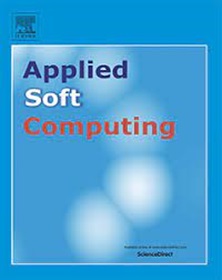Defect recognition network for optical fiber cables based on feature information compensation
IF 7.2
1区 计算机科学
Q1 COMPUTER SCIENCE, ARTIFICIAL INTELLIGENCE
引用次数: 0
Abstract
The occurrence of electrical corrosion defects in ADSS optical fiber cables presents a significant challenge to the reliable operation of communication lines. Despite the importance of this issue, there has been limited research on accurately detecting electrical corrosion defects in recent years. Moreover, existing defect detection algorithms for industrial issues, such as electrical corrosion in ADSS optical fiber cables, are prone to feature information loss. To address this, we propose an improved Feature Compensation You Only Look Once (FC-YOLO) algorithm for effective detection of electrical corrosion defects in optical cables. First, we proposed the Feature Information Compensated Fusion Network (FICFN), which compensates for fusion features, mitigates the loss of defect information during cross-layer fusion, and enhances feature fusion. Second, an auxiliary training head is integrated into the head network, improving the information expression capability of the FICFN. Finally, an Efficient Local Attention (ELA) mechanism is incorporated into the neck network to boost the localization capabilities of the FICFN. To evaluate the efficacy of the proposed FC-YOLO, we conducted comparison experiments using different mainstream algorithms on both the ADSS electrical corrosion defects dataset and the NEU-DET dataset. Results from the ADSS dataset show that, compared to the YOLOv10s algorithm, the proposed algorithm achieves a 4.7 % increase in mean average precision (mAP@50), reaching 90.2 %, and a 4.1 % improvement in mAP@50–95. These enhancements meet the specifications required for power inspection. On the NEU-DET dataset, the algorithm improved mAP@50 and mAP@50–95 by 8.0 % and 6.1 %, respectively, demonstrating its adaptability for industrial defect detection tasks.
基于特征信息补偿的光纤电缆缺陷识别网络
ADSS光缆电气腐蚀缺陷的发生对通信线路的可靠运行提出了重大挑战。尽管这一问题很重要,但近年来对准确检测电气腐蚀缺陷的研究还很有限。此外,现有的针对工业问题的缺陷检测算法,如ADSS光缆的电气腐蚀,容易导致特征信息丢失。为了解决这个问题,我们提出了一种改进的特征补偿你只看一次(FC-YOLO)算法,用于有效检测光缆中的电气腐蚀缺陷。首先,提出特征信息补偿融合网络(FICFN),补偿融合特征,减轻跨层融合过程中缺陷信息的丢失,增强特征融合;其次,在头部网络中加入辅助训练头部,提高了FICFN的信息表达能力。最后,在颈部网络中加入了高效局部注意(ELA)机制,以提高FICFN的定位能力。为了评估所提出的FC-YOLO的有效性,我们在ADSS电气腐蚀缺陷数据集和NEU-DET数据集上使用不同主流算法进行了比较实验。ADSS数据集的结果表明,与YOLOv10s算法相比,该算法的平均精度(mAP@50)提高了4.7 %,达到90.2 %,mAP@50 -95提高了4.1 %。这些增强功能符合电源检查所需的规格。在nue - det数据集上,该算法对mAP@50和mAP@50 -95分别提高了8.0 %和6.1 %,证明了该算法对工业缺陷检测任务的适应性。
本文章由计算机程序翻译,如有差异,请以英文原文为准。
求助全文
约1分钟内获得全文
求助全文
来源期刊

Applied Soft Computing
工程技术-计算机:跨学科应用
CiteScore
15.80
自引率
6.90%
发文量
874
审稿时长
10.9 months
期刊介绍:
Applied Soft Computing is an international journal promoting an integrated view of soft computing to solve real life problems.The focus is to publish the highest quality research in application and convergence of the areas of Fuzzy Logic, Neural Networks, Evolutionary Computing, Rough Sets and other similar techniques to address real world complexities.
Applied Soft Computing is a rolling publication: articles are published as soon as the editor-in-chief has accepted them. Therefore, the web site will continuously be updated with new articles and the publication time will be short.
 求助内容:
求助内容: 应助结果提醒方式:
应助结果提醒方式:


